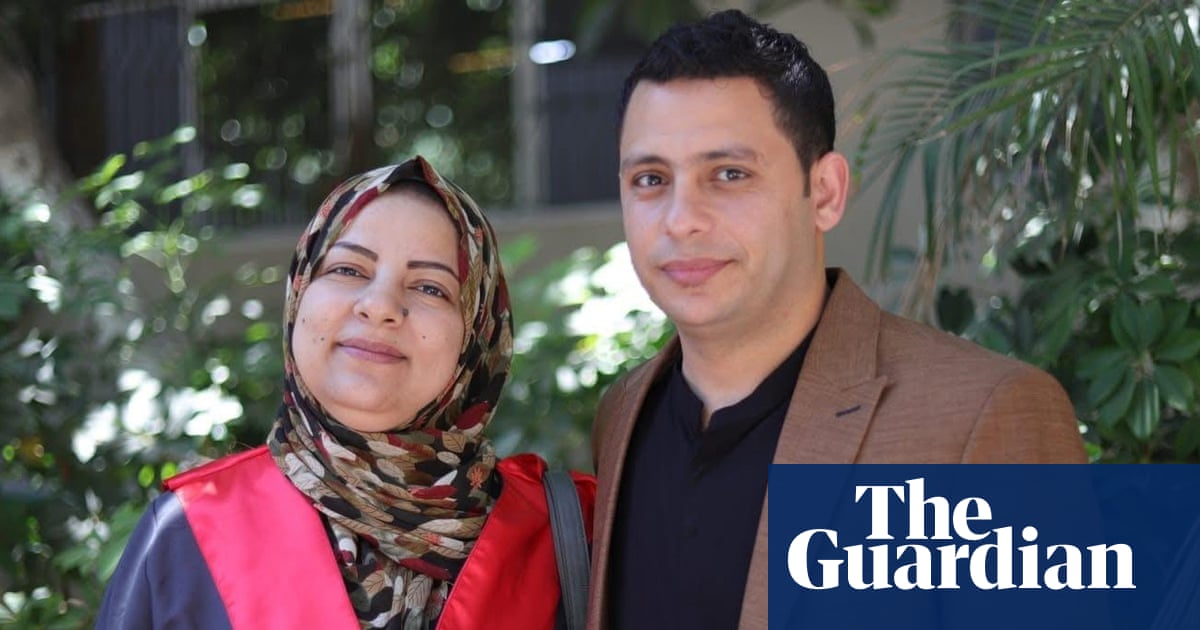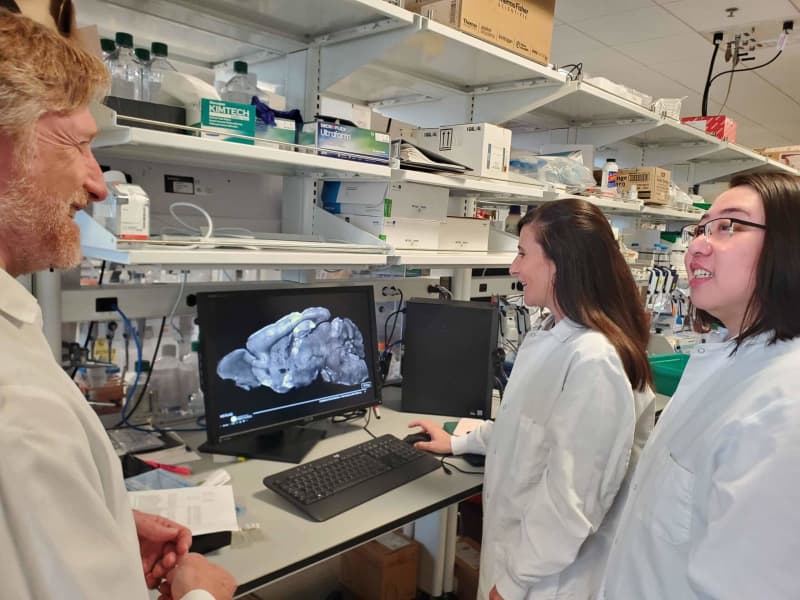“Explain how the time inconsistency of optimal monetary policy can lead to a stabilisation bias. How would the introduction of a price path target help to address it?”
After reading the question three times, I still couldn’t make sense of…

“Explain how the time inconsistency of optimal monetary policy can lead to a stabilisation bias. How would the introduction of a price path target help to address it?”
After reading the question three times, I still couldn’t make sense of…

A Gaza PhD student who won a fully funded scholarship to the University of Glasgow has spoken of her heartbreak at her family being denied entry to the UK.
In May, Manar al-Houbi received confirmation of her successful application. “It felt…

Unlock the Editor’s Digest for free
Roula Khalaf, Editor of the FT, selects her favourite stories in this weekly newsletter.
Jaguar Land Rover appears to have been targeted by hackers more than a year before the cyber attack in August that forced the carmaker to halt production, as investigators consider whether a state-backed actor or organised crime group was behind the hack.
Few details have emerged from the investigation, led by the National Crime Agency, into the attack that has devastated JLR’s supply chain and triggered a £1.5bn state-backed loan for the UK carmaker owned by India’s Tata Motors. The National Cyber Security Centre is also involved in the probe.
One person with direct knowledge of JLR’s investigation of the attack said it had not ruled out the involvement of organised crime or state-backed agents.
One senior government figure added: “It’s considered reasonably likely that there could be a hostile state behind this, although we don’t yet know either way.”
According to an analysis by cyber security consultancy Deep Specter Research, the malicious activity targeting JLR appears to have started around the time the carmaker started replacing its digital and production systems with the help of various Tata Group technology units in late 2023.
The analysis found that large volumes of employee and customer information and other data were then leaked on to the dark web several times in 2024, with details suggesting the data originated from JLR’s systems.
According to Deep Specter, large data leaks were also spotted in 2024 at Tata Consultancy Services, which JLR uses for cyber security services. TCS declined to comment.
The August hack was “definitely not a spontaneous attack”, said Shaya Feedman, Deep Specter co-founder and former head of information security at Porsche’s digital unit.
“We believe [it was] state orchestrated,” he added, pointing to the length of the campaign, the financial resources committed and the level of infiltration, which shut down JLR’s production for a month. JLR only restarted production for the Range Rover and Range Rover Sport at its Solihull plant last week.
However, other cyber security experts say it is unclear if any previous leaks were linked to the August attack.
JLR said it was investigating the attack but declined to comment further. “Our focus is on the safe recovery and restoration across our global operations,” it said.
Shortly after the attack, a hacker calling himself “Rey” claimed he had broken into JLR’s systems. Cyber experts said they believe “Rey” was the same individual, previously linked to the hacker group Hellcat, who claimed to have hacked JLR in March and stolen confidential data.
Deep Specter said state-sponsored groups often try to hide their tracks by sharing access codes with others. Other cyber experts said hacker groups sometimes worked with or were backed by bigger criminal organisations.
A spate of recent cyber attacks on UK companies, including retailers Marks and Spencer, the Co-op and Harrods, has prompted chancellor Rachel Reeves to warn of the involvement of hostile states.
“A number of these attacks originate in Russia by Russian-backed entities,” she recently told ITV News.
The spate of hacks has also led to scrutiny of Tata Consultancy Services, which has provided services to recent victims including M&S, Co-op, Stellantis and Renault.
TCS has cleared itself in an internal probe and denied it was used as a gateway for criminals in the M&S attack.
Some cyber experts have suggested that TCS’s extensive market share in cyber security could explain its links to several of the companies that have been targeted.
Ciaran Martin, former chief executive of the NCSC, said the JLR hack in August was unusual because so few details of who did it and how have emerged so far.
“This attack would have been well planned and researched to work out what damage they could do and how they could inflict maximum pain on JLR,” said Martin, now a professor at Oxford university’s Blavatnik School of Government.
Feedman said the JLR hack could expose supply chain and other vulnerabilities across the sector, as Stellantis and Renault have also recently fallen victim to data theft.
At the time of the attack, JLR did not have cyber security insurance although it was in talks to buy a policy.
The company had warned in its 2024 annual report that: “Failure of critical infrastructure or applications could cause an outage across the JLR enterprise, hindering our ability to conduct essential business transactions or activities.”
Jamie MacColl, senior research fellow and cyber security expert at the Royal United Services Institute, said any organisation of JLR’s size would have cyber vulnerabilities, especially in manufacturing. “The question is how resilient they are when your system is actually compromised by a bad actor,” he added.
Additional reporting by Chris Kay in Mumbai

– Digital Dubai Leads Distinguished Government Participation at GITEX Global 2025 with a Vision for the City of the Future
GITEX Global reaffirms our commitment to realizing our leadership’s vision of creating “City-as-a-Service” — an integrated, people-centered ecosystem of proactive and predictive digital services, built on collaboration and innovation.
Dubai, October 12, 2025 – The world’s largest technology event, GITEX Global 2025, opens tomorrow at the Dubai World Trade Centre, marking its largest edition to date. The event brings together over 6,000 exhibitors from 170 countries and more than 1,400 global speakers, including top leaders and decision-makers in technology and digital innovation. Running from October 13 to 17, the exhibition will feature a diverse range of activities that reinforce its status as the world’s premier technology event and a key platform shaping the future of the global digital economy.
The Government of Dubai will participate with an integrated pavilion organized by Digital Dubai, bringing together over 50 government and private sector entities and strategic partners driving the city’s digital transformation. Within the Dubai Pavilion, Digital Dubai will highlight a portfolio of transformative initiatives and projects powered by advanced technologies and artificial intelligence, reaffirming Dubai’s position as a global digital capital and a model for future-ready cities.
The pavilion’s Platinum Partners include e&, du, Emaratech, and Emirates Auction, while the Strategic Justice Partner is The Judicial Council which comprises of Dubai Courts, Dubai Public Prosecution, Judicial Inspection Authority, Rental Disputes Center, DIFC Courts, and the Dubai Judicial Institute. The Gold Partners include Dubai Finance, Mohammed Bin Rashid Housing Establishment, Dubai Airports, Moro Hub, UXE, and Emcode, and the Silver Partners are Dell and Network International.
This year, the Dubai Government Pavilion will unveil a host of smart digital initiatives and services designed to leverage technology to enhance quality of life—delivering seamless, proactive, and human-centered digital experiences.
Commenting on the occasion, H.E. Hamad Obaid Al Mansoori, Director General of Digital Dubai, stated: “GITEX Global is a highly anticipated annual event that brings together decision-makers and experts from around the world to shape the future of technology. Amid a rapidly changing global landscape, GITEX Global serves as a forward-looking platform for discussion, collaboration, and knowledge exchange that benefits all. The event reflects Dubai’s leadership and its pioneering role in digital transformation, dedicated to enhancing human wellbeing and advancing the digital economy toward new horizons.”
Al Mansoori added: “At Digital Dubai—and across the Government of Dubai—we look at GITEX Global as an opportunity to reaffirm our commitment to realizing our leadership’s vision through the concept of of creating “City-as-a-Service”— an integrated ecosystem of proactive, predictive, and people-centered services, driven by collaboration across all sectors and a community that thrives in a digitally empowered world.”
This year’s exhibition will spotlight the latest advancements in Artificial Intelligence, Cybersecurity, Cloud Computing, Smart Cities, and Next-Generation Technologies, alongside a dedicated space for startup innovation, a key driver of the economy of the future.
With record-breaking participation, GITEX Global 2025 reaffirms Dubai’s global leadership as a hub for innovation and technology, bringing together the minds, ideas, and projects shaping the digital future.

A new study has brought scientists one step further in the direction of developing a cure for a brutal group of rare brain disorders known as SYNGAP1-related disorders, or SRDs. Researchers were able to successfully use a gene therapy technique…

Under Caixinha, Rangers had Declan John and Gerrard had Ryan Kent. Steven Davis, Borna Barisic, Jermaine Defoe, Ianis Hagi, Calvin Bassey, Joe Aribo and Kemar Roofe improved things. There were also duds – far too many – but Gerrard was bullet…

Ending their recent run of playoff frustration earned the Milwaukee Brewers a new nickname from their manager.
Pat Murphy has referred to his team as the “Average Joes,” a nod to their small-market status and lack of big names. But after…